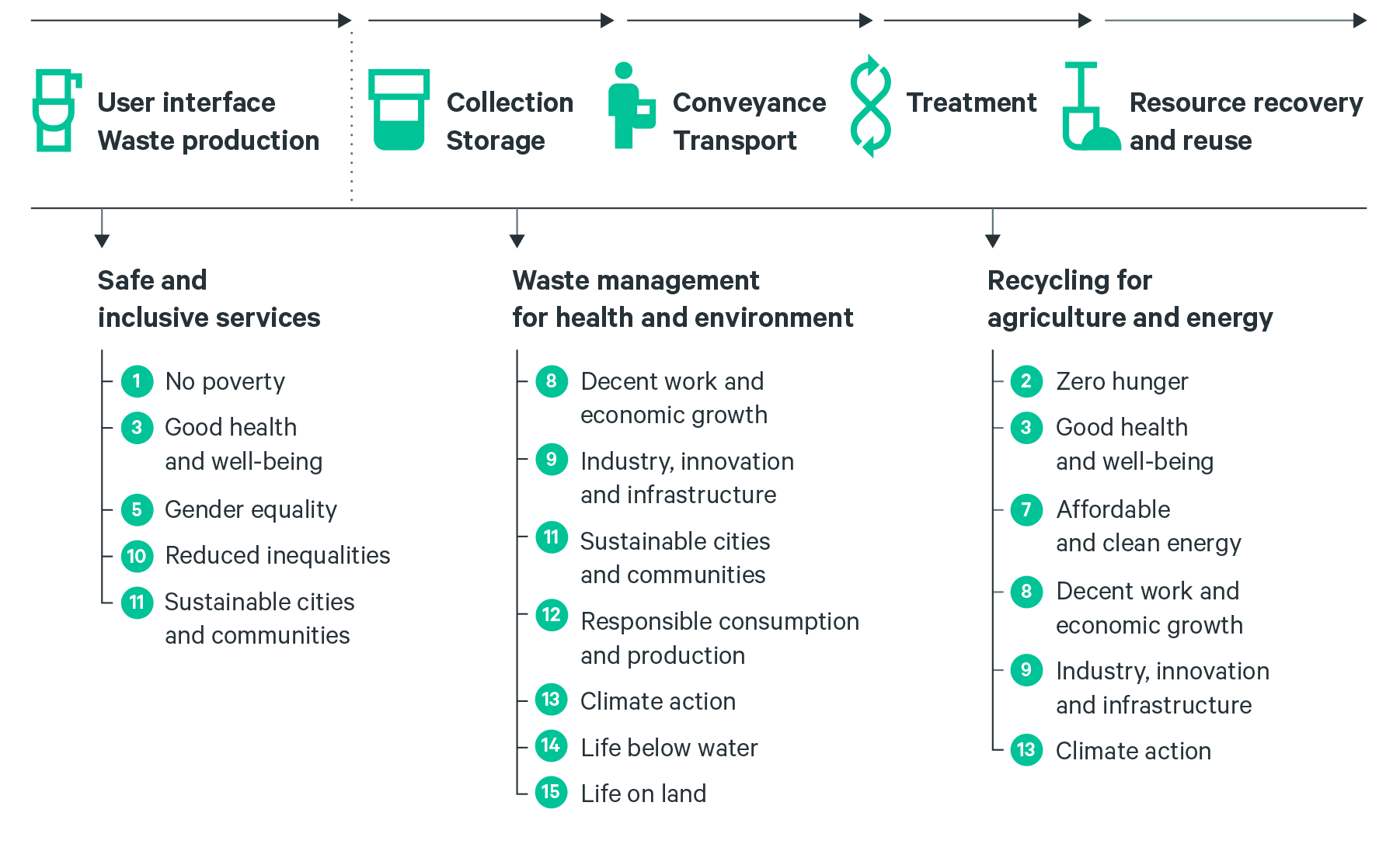This change story is from our 2018 annual report.
Just north of Bogotá, Colombia, the small municipality of Chía is growing fast. Many of the new arrivals are making their homes in periurban settlements, and the twin pressures of a growing population growth and economic activity are overwhelming infrastructure that was built for a smaller town.
The potential health risks are clear. Less than 40% of the wastewater entering Chía’s old sewerage system is treated. The rest is discharged untreated into the Bogotá river or a tributary, the Frio, reaching the Colombian capital 15 kilometres or so downstream. Many homes lack any sewer connection, and poorly built and maintained latrines and other on-site sanitation systems pose an additional health threat to urban residents and freshwater ecosystems.
The municipal authorities in Chía are acutely aware of the need to improve waste management and are developing a new sewage treatment plant. In 2018 the Chía Environmental Office teamed up with the SEI Initiative on Sustainable Sanitation and researchers from El Bosque University to find out how to make Chía’s waste management more effective and at the same time contribute to a range of sustainable development priorities.
The collaboration used SEI’s REVAMP (Resource Value Mapping) tool. REVAMP currently takes data on municipal waste flows (including food waste, wastewater and other organic waste) and uses it to calculate how much revenue, plant fertilizer or clean energy (biogas, briquettes) could potentially be produced from it at municipal level. REVAMP can calculate the optimal mix of these outputs for different waste-management and reuse scenarios.
First developed for Kampala, Uganda, REVAMP is also being applied in Naivasha, Kenya. The UrbanCircle and Bolivia WATCH projects that SEI is leading aim to strengthen the tool even further. SEI is also working on creating an open-access online version of REVAMP.
Working with stakeholders has been an essential part of the process in Chía – to ensure both local ownership and the accuracy of the REVAMP calculations, as well as to help in further developing REVAMP’s capabilities.
Workshops and focus group discussions were first held with stakeholders from a variety of sectors: civil society, business and industry associations, and authorities). The meetings established that there was significant demand for improved waste management and revealed a great local interest in exploring resource recovery options – outcomes that brought the initially reluctant municipal water and waste company on board.
Collaboration with local stakeholders, including the water and waste company, helped to establish a base of high-quality input data about local conditions and waste flows that underpinned the REVAMP version used in Chía.
Local stakeholder knowledge is helping SEI to add more waste streams to the REVAMP tool, for example animal waste. SEI is also using the Chía case to broaden the range of outputs REVAMP can offer, such as the greenhouse gas emissions under each reuse scenario. This will mean REVAMP can show how urban waste-management and reuse decisions can impact multiple SDGs, allowing local decision-makers to prioritize.
SEI’s research on sustainable sanitation highlights opportunities to contribute
to multiple SDGs along the sanitation service chain. While REVAMP highlights opportunities at the last stage, resource recovery and reuse, the entire service chain needs to be designed in an integrated way.

Field studies to gather data on local conditions also revealed that there are already some promising resource-recovery initiatives working with waste in the municipality, though on a small scale. This information will be useful in the next phase of work in Chía, helping to flesh out scenarios and to demonstrate the feasibility of more integrated waste-management solutions in the municipality.
The project also highlighted how vulnerable residents of Chía are exposed to health risks due to inadequate waste management. A prime example is the strips of informal settlements along the two polluted rivers, which have also been affected by flooding in recent years. A study of informal activities – such as gleaning at the regional landfill site – is planned for the next phase of the project in order to explore strategies to reduce the risks and vulnerabilities faced by those involved.
Alongside the project in Chía, SEI established a dialogue with the Colombian Ministry of Environment on the topic of linking waste management with resource recovery. As a result, the ministry committed to adding resource recovery to its list of priority areas for its next programming phase. Thus, the local level supported national-level impact, while thematic support from the national level incentivized further action at the local level. SEI will continue engagement from the national authorities, to the interests of having broader policy impact.
Water is fundamental to human development, from drinking water and sanitation to agriculture and generating electricity. SEI offers knowledge and solutions for how to manage water resources in a connected way to ensure water, energy and food security for all.

The focus of SEI’s work on sanitation is on highlighting its strong connections to a wide range of other sustainable development themes. Poor sanitation access threatens health (SDG 3: Good health and well-being) and often incomes (SDG 1: No poverty) and educational opportunities (SDG 4: Quality education) due to sickness. Poorly managed sanitation waste also harms both life on land and life below water (SDGs 14 and 15). By framing sanitation as a resource management issue, SEI also shows the potential benefits to society, as recovered resources can be used as a source of clean energy (SDG 7: Affordable and clean energy), agricultural fertilizer to support food security (SDG 2: No hunger) and more liveable communities (SDG 11: Sustainable cities and communities).
This is an impact story – a highlight of our work from 2018. This story and a selection of others can be found in our annual report.
SEI annual report / Our annual report – From Policy to Practice – reviews how we tackled environment and development challenges in 2018.
Design and development by Soapbox.

